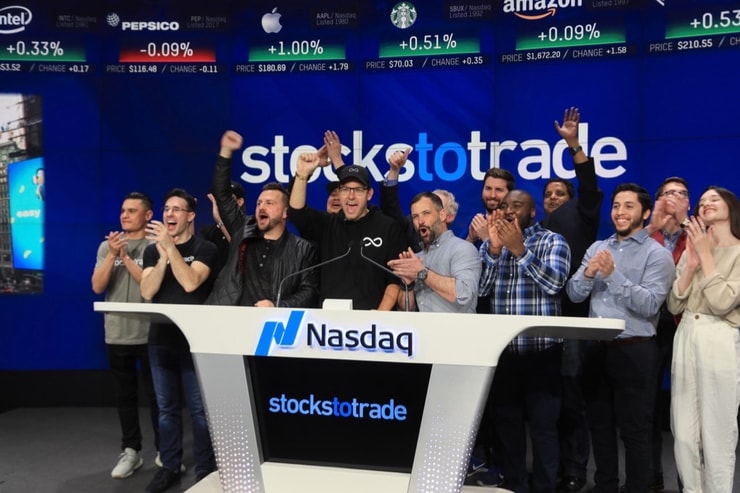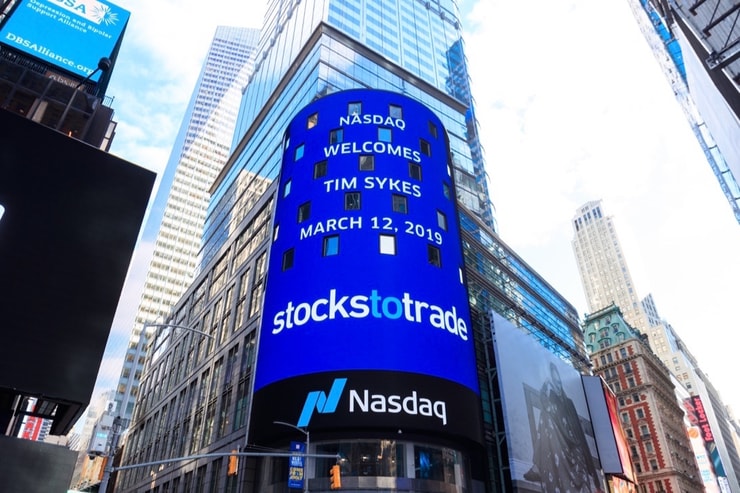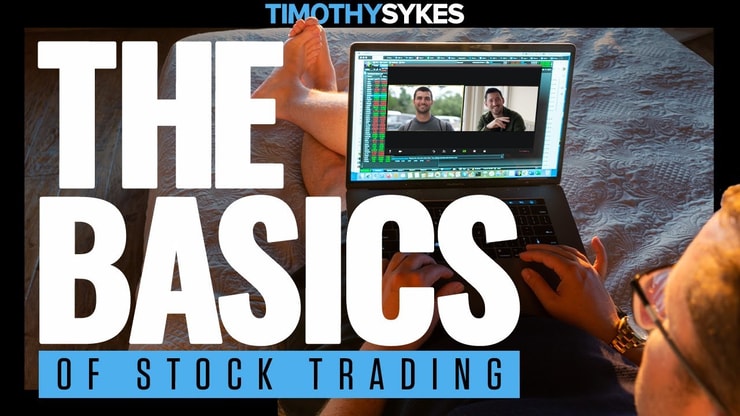The Nasdaq Composite Index is one of the top stock market indexes, which people look to for the purposes of measuring market health and stock market activity. With its unique composition and weighting system, these listings offer critical insights into the technology sector and the overall United States economy.
Founded in 1971, Nasdaq Inc. introduced the Nasdaq Composite Index as a means to track the performance of the companies listed on its stock exchange. A significant number of these companies fall into the technology, media, and communications industries, including giants like Microsoft, Apple, and Alphabet. This distinctive focus makes the Nasdaq Composite Index a vital tool for investors looking to gain exposure to the tech sector.
Just knowing that the Nasdaq Composite Index exists isn’t enough. It’s like having a powerful computer without understanding its software or hardware. To truly make use of this tool, you need to understand how it works, what it measures, and how it differs from other indices, such as the S&P 500 or the Russell 2000 Index.
This article aims to provide that information, offering clear, concise, and factual insights into the workings of the Nasdaq Composite Index. Let’s get to the main points!
Table of Contents
- 1 First Things First: What Is the Nasdaq Composite Index?
- 2 How Does the Nasdaq Composite Index Work?
- 3 What Does It Measure?
- 4 What Are the Different Types of Companies in the Nasdaq Composite Index?
- 5 How Do Companies Get Listed in the Nasdaq Composite?
- 6 How Can I Invest in the Nasdaq Composite Index Companies?
- 7 The Major Differences Between Nasdaq Composite and the S&P 500
- 8 Key Takeaways
First Things First: What Is the Nasdaq Composite Index?

2025 Millionaire Media, LLCThe Nasdaq Composite Index is a market capitalization-weighted index, which means that the value of each company within it contributes to the index based on its market cap. Larger companies like Apple (AAPL), Alphabet Class A (GOOGL), and Alphabet Class C (GOOG), have a greater impact on the index’s overall performance than smaller companies.
This index is home to a multitude of industries, but technology companies hold a significant sway, given their substantial market caps. That’s not to say that other sectors don’t have representation — consumer, cyclical and non-cyclical companies, semiconductor firms, and even REITs are constituents of the Nasdaq Composite.
The Nasdaq Composite Index is a key player in the world of stock market indices. These indices offer a window into the performance of various sectors of the market, helping investors make informed decisions. If you’re looking to broaden your understanding of these tools, our comprehensive guide on stock market indices is a great place to start.
How Does the Nasdaq Composite Index Work?
Unlike a traditional exchange, the Nasdaq Composite Index operates entirely electronically — a technology-based trading system that mirrors its tech-centric composition. This system of computer and networking technology allows for efficient, real-time trading and tracking of the index.
More Breaking News
- PSIX Stocks Soars with Record Financial Outcomes
- RIOT’s Bitcoin Boom: Exploring Investment Potential
- Power Solutions International’s Q2 2025 Earnings Record Spark Significant Growth
- Riot Platforms Inc. Seeks European Expansion Amidst Strategic Developments
This composite works by tracking the value of the shares of its components and calculating an average, with larger companies wielding more influence due to their higher market capitalization. The price of the Nasdaq Composite Index is regularly updated, giving investors up-to-date information on the index’s performance and an indication of the overall health of the market.
What Does It Measure?

2025 Millionaire Media, LLCThe Nasdaq Composite Index measures the performance of the companies listed on the Nasdaq stock exchange. It’s a broad-based index, incorporating various sectors. However, it’s heavily skewed towards the technology sector, making it an excellent barometer of the performance of tech stocks and, by extension, the tech industry as a whole.
From mega-caps like Apple (AAPL) and Alphabet (GOOGL, GOOG) to smaller up-and-coming companies, the Nasdaq Composite Index provides a broad view of the market. Its performance is influenced by several factors, from economic data and mortgage rates to news about individual companies.
The Nasdaq Composite isn’t the only index that investors should keep an eye on. The S&P 500, for example, offers a broader view of the market, encompassing a wide range of companies. If you’re interested in exploring the potential benefits of investing in the S&P 500, check out our detailed guide on the subject.
I’ve made $7.4 million in my career thanks to the penny stocks I’ve traded, but that doesn’t mean I ignore the results of the bigger market-cap stocks covered in these indices. I use them to understand market sentiment, which gives me a feel for how tight a leash I should keep on my trades.
What Are the Different Types of Companies in the Nasdaq Composite Index?
The Nasdaq Composite Index is quite diverse, hosting companies from various sectors. While technology companies like Microsoft, Apple, Alphabet, and others dominate the index, other sectors are also well-represented. Consumer, cyclical and non-cyclical companies like Amazon (AMZN) and Costco Wholesale, semiconductor manufacturers like Nvidia (NVDA) and Broadcom (AVGO), and even telecommunication giants like Qualcomm are part of this index.
How Do Companies Get Listed in the Nasdaq Composite?

2025 Millionaire Media, LLCGetting listed in the Nasdaq Composite isn’t a walk in the park. Companies need to meet certain financial, liquidity, and corporate governance requirements. Editors look for a minimum market capitalization, specific trading volume criteria, and adherence to Nasdaq’s corporate governance rules.
Companies like Meta Platforms (formerly Facebook), Intel, and PepsiCo (PEP) have all met these stringent requirements to get listed on the Nasdaq Composite Index.
How Can I Invest in the Nasdaq Composite Index Companies?
Investing directly in all companies listed on the Nasdaq Composite Index is impractical for most investors. But don’t worry — there’s a more straightforward way: index funds and ETFs. These financial tools allow you to invest in a broad cross-section of the market with a single purchase.
Fidelity Nasdaq Composite Index Fund (FNCMX) and Fidelity Nasdaq Composite Index Tracking Stock (ONEQ) are two popular choices. Another is the Invesco QQQ ETF (QQQ), which tracks the Nasdaq-100, a subset of the Nasdaq Composite.
The Major Differences Between Nasdaq Composite and the S&P 500
When comparing indices, the Nasdaq Composite and the S&P 500 often come up. They both measure the performance of U.S. companies, but they have significant differences. The S&P 500 consists of 500 large-cap companies from various exchanges, while the Nasdaq Composite includes all the companies listed on the Nasdaq exchange, making it broader in scope.
Another major difference lies in their composition. The S&P 500 is a blend of multiple industries, while the Nasdaq Composite is heavily skewed towards technology and growth-oriented companies.
Another index that often comes up in these discussions is the Dow Jones Industrial Average. The Dow Jones tracks a much more select group of companies, offering a different perspective on the market. To learn more about the Dow Jones Industrial Average and how it compares to the Nasdaq Composite, check out our article on the Dow Jones.
Key Takeaways

2025 Millionaire Media, LLCThe Nasdaq Composite Index is one of the major options in indexing-type derivatives and mutual funds. Its unique focus on technology stocks and its broad representation of various industries offer insights into the overall state of the market, particularly the tech sector. By understanding its content and what it measures, you can make more informed trading decisions.
Trading isn’t rocket science. It’s a skill you build and work on like any other. Trading has changed my life, and I think this way of life should be open to more people…
I’ve built my Trading Challenge to pass on the things I had to learn for myself. It’s the kind of community that I wish I had when I was starting out.
We don’t accept everyone. If you’re up for the challenge — I want to hear from you.
Apply to the Trading Challenge here.
Trading is a battlefield. The more knowledge you have, the better prepared you’ll be.
Does the Nasdaq Composite Index fit your trading strategy? Let me know in the comments — I love hearing from my readers!









Leave a reply